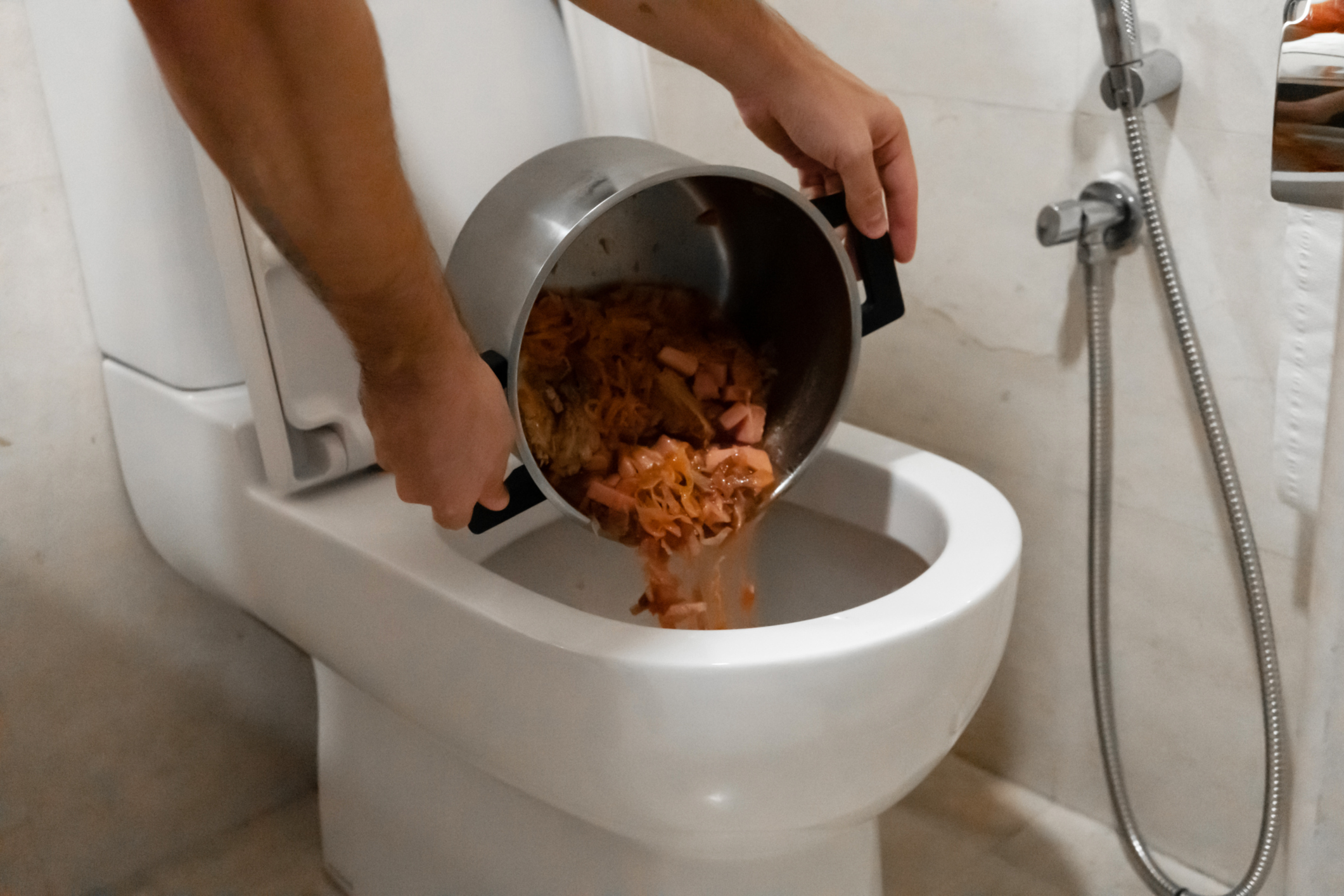Is it Possible to Dispose of Food in the Toilet?
Is it Possible to Dispose of Food in the Toilet?
Blog Article
We have found the article on What Can Happen If You Flush Food Down the Toilet? below on the net and thought it made good sense to discuss it with you in this article.

Intro
Many people are often confronted with the problem of what to do with food waste, specifically when it pertains to leftovers or scraps. One common concern that occurs is whether it's fine to purge food down the bathroom. In this article, we'll look into the reasons individuals might take into consideration flushing food, the repercussions of doing so, and alternative techniques for correct disposal.
Reasons individuals might think about flushing food
Lack of recognition
Some individuals might not be aware of the prospective injury triggered by purging food down the toilet. They might erroneously believe that it's a safe practice.
Benefit
Purging food down the toilet may feel like a quick and simple remedy to getting rid of undesirable scraps, especially when there's no close-by garbage can readily available.
Laziness
Sometimes, individuals might simply select to flush food out of large idleness, without considering the repercussions of their activities.
Effects of flushing food down the commode
Environmental impact
Food waste that ends up in rivers can add to air pollution and injury aquatic communities. Furthermore, the water made use of to purge food can stress water sources.
Pipes concerns
Purging food can lead to blocked pipes and drains, triggering expensive plumbing repair services and aggravations.
Sorts of food that need to not be purged
Coarse foods
Foods with coarse appearances such as celery or corn husks can obtain entangled in pipelines and trigger blockages.
Starchy foods
Starchy foods like pasta and rice can take in water and swell, causing obstructions in pipes.
Oils and fats
Greasy foods like bacon or cooking oils ought to never be flushed down the toilet as they can strengthen and create clogs.
Correct disposal approaches for food waste
Utilizing a garbage disposal
For homes geared up with garbage disposals, food scraps can be ground up and flushed via the pipes system. Nevertheless, not all foods are suitable for disposal in this manner.
Recycling
Certain food packaging products can be reused, minimizing waste and reducing environmental impact.
Composting
Composting is a green method to throw away food waste. Organic products can be composted and utilized to enhance soil for horticulture.
The value of proper waste monitoring
Minimizing environmental harm
Correct waste administration practices, such as composting and recycling, aid lessen contamination and preserve natural deposits for future generations.
Safeguarding pipes systems
By preventing the practice of flushing food down the commode, property owners can prevent expensive plumbing repair services and preserve the honesty of their plumbing systems.
Verdict
To conclude, while it might be appealing to purge food down the bathroom for ease, it is very important to understand the prospective effects of this activity. By adopting proper waste management methods and dealing with food waste sensibly, individuals can contribute to much healthier plumbing systems and a cleaner atmosphere for all.
FLUSH FOOD DOWN THE TOILET?
FLUSHING FOOD CAN CAUSE BLOCKED DRAINS IN YOUR HOME
All of the plumbing fixtures in your home are connected to the same sewer pipe outside of your home. This outdoor sewer pipe is responsible for transporting all the wastewater from your home to the Council sewer mains. Even small pieces of food that go down the kitchen sink can cause problems for your sewer. It should therefore be obvious that flushing larger bits of food, such as meat, risks a clog in either the toilet itself or the sewer pipes. Flushing greasy food is even more problematic because oil coagulates when it cools, coating the interior lining of your pipes.
THE TOILET IS NOT A BIN
Food isn’t the only thing that people shouldn’t be flushing down the toilet. People use the toilet to dispose of all kinds of things such as tampons, makeup wipes, dental floss, kitty litter and even underwear. Water goes to great lengths to educate residents about the high costs and stress placed on wastewater treatment systems simply from people flushing the wrong stuff down the toilet. It costs taxpayers millions of dollars each year, and homeowners thousands in blocked drain repairs.
FLUSHING FOOD IS A WASTE OF WATER
Flushing food is a waste of our most precious resource - water. In June this year Level 1 water restrictions were introduced to protect water supply from drought conditions. Much of New South Wales continues to be affected by prolonged drought with recent figures revealing up to 97 per cent of the state remains in drought. Depending on whether you have a single or dual flush toilet, every single flush uses between five and 11 litres of water. In the current climate this is a huge amount of water to be wasting on flushing food that should be placed in the bin (or better yet, the compost).
https://www.jabplumbingsolutions.com.au/blog/can-you-flush-food-down-the-toilet

We had been shown that write-up about Is it safe to flush food (especially rice) down the toilet? from a buddy on our other domain. Sharing is nice. You just don't know, you might be doing someone a favor. Thank you for taking the time to read it.
Information Report this page